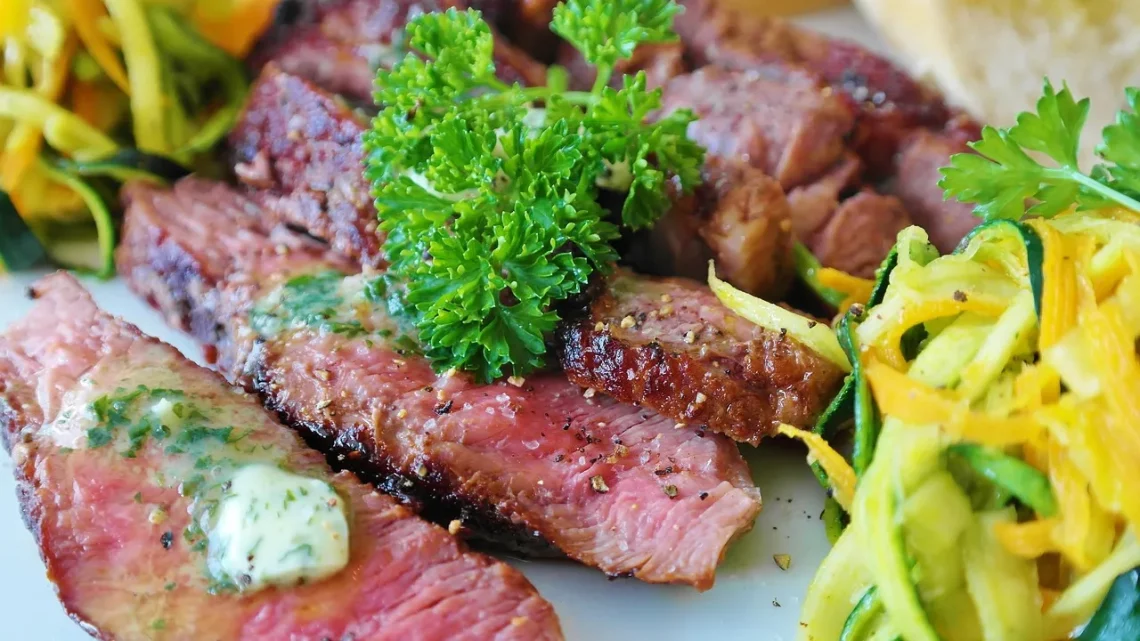
Flank Steak Nutrition: Benefits and Key Nutritional Facts Explained
Flank steak is a popular cut of beef known for its rich flavor and versatility in various culinary applications. This flavorful cut, taken from the abdominal muscles of the cow, has gained prominence among chefs and home cooks alike, appreciated for its affordability and ability to absorb marinades and spices. Flank steak is often grilled, broiled, or used in stir-fries, making it a favorite for a range of dishes that benefit from its robust taste and chewy texture.
In addition to its culinary appeal, flank steak is also a source of essential nutrients that contribute to a balanced diet. As consumers become more health-conscious, understanding the nutritional profile of different foods, including cuts of meat like flank steak, is increasingly important. This cut not only provides protein but also offers important vitamins and minerals that play a vital role in maintaining overall health.
Moreover, with the rise of dietary preferences that emphasize leaner meats, flank steak presents an excellent option for those looking to enjoy the rich flavors of beef without excessive fat content. Whether you’re a fitness enthusiast, a busy parent, or someone who simply enjoys cooking, incorporating flank steak into your meals can be a delicious way to ensure you’re getting the nutrients your body needs.
Understanding the Nutritional Profile of Flank Steak
Flank steak is renowned for its unique nutritional composition, making it a desirable choice for those seeking a protein-rich diet. A standard serving of flank steak provides a significant amount of protein, which is essential for muscle repair and growth. Protein plays a critical role in various bodily functions, including hormone production and immune system support.
In a typical 3-ounce serving of cooked flank steak, you can expect to find approximately 22 grams of protein. This makes it an excellent option for athletes and active individuals who need to meet higher protein requirements. Furthermore, the protein found in flank steak is considered complete, as it contains all the essential amino acids required by the body.
In addition to protein, flank steak is relatively low in fat compared to other cuts of beef, particularly when trimmed properly. A 3-ounce serving typically contains around 8 grams of fat, with only 3 grams of saturated fat. This lower fat content makes it a favorable choice for those aiming to reduce their overall fat intake while still enjoying the rich flavors of beef.
Flank steak is also a good source of several important vitamins and minerals. It is rich in iron, a crucial mineral that plays a key role in transporting oxygen in the blood. Adequate iron intake is particularly important for individuals who engage in high levels of physical activity, as it helps improve endurance and reduce fatigue. Additionally, flank steak contains zinc, which is essential for immune function, wound healing, and DNA synthesis.
Another notable nutrient found in flank steak is vitamin B12, which is vital for nerve function and red blood cell formation. A serving of flank steak can provide a substantial portion of the daily recommended intake of this essential vitamin, making it a great addition to a well-rounded diet.
Health Benefits Associated with Flank Steak Consumption
Incorporating flank steak into your diet can confer several health benefits, primarily due to its nutrient density and high protein content. One of the most significant advantages is its ability to support muscle growth and repair. For individuals engaged in regular physical activity or strength training, consuming adequate protein is vital for optimizing recovery and enhancing performance.
Moreover, the amino acids present in flank steak contribute to muscle synthesis, helping to maintain lean body mass. This is particularly important as we age, as muscle mass tends to diminish over time. Consuming protein-rich foods like flank steak can help mitigate this loss and promote overall strength.
Another health benefit of flank steak lies in its iron content. Iron is crucial for maintaining energy levels and supporting cognitive function. For individuals who are active or have increased iron needs, such as pregnant women and athletes, including iron-rich foods like flank steak can help prevent iron deficiency anemia, a condition characterized by fatigue and weakness.
Additionally, the zinc present in flank steak supports immune health, ensuring that the body can effectively fend off infections and recover from illness. A robust immune system is essential for overall well-being, particularly during flu season or when exposed to illness.
Furthermore, the vitamin B12 content in flank steak supports neurological health and cognitive function. Adequate intake of this vitamin is crucial for maintaining memory and concentration, making flank steak a beneficial addition to the diets of individuals looking to support brain health.
While flank steak offers numerous health benefits, it’s essential to consume it as part of a balanced diet that includes a variety of fruits, vegetables, whole grains, and healthy fats. This holistic approach to nutrition ensures that you receive a wide range of nutrients necessary for optimal health.
Cooking Methods and Culinary Uses of Flank Steak
Flank steak is known for its versatility in the kitchen, making it a favorite among home cooks and professional chefs alike. Its robust flavor and relatively quick cooking time allow for a variety of culinary applications, from grilling to slow-cooking. Understanding the best cooking methods for flank steak can enhance its tenderness and taste, ensuring a delicious meal every time.
One popular method for preparing flank steak is grilling. Grilling not only infuses the meat with a smoky flavor but also allows for a quick cooking time, which helps retain its natural juices. When grilling flank steak, it’s essential to marinate it beforehand to enhance tenderness and flavor. Marinades that include acidic ingredients, such as vinegar or citrus juice, can help break down the meat fibers, resulting in a more tender bite.
Another excellent cooking method for flank steak is broiling. This technique involves cooking the meat under direct heat, similar to grilling, but from above. Broiling is a fantastic option for indoor cooking, allowing you to achieve a beautifully seared exterior while keeping the interior juicy.
Stir-frying is another popular way to prepare flank steak, especially in Asian cuisine. By slicing the steak against the grain into thin strips, you can create tender pieces that cook quickly in a hot pan. This method pairs well with a variety of vegetables and sauces, making it a quick and nutritious meal option.
For those who prefer low and slow cooking, flank steak can also be braised. This method involves cooking the meat in a flavorful liquid over low heat for an extended period, resulting in tender, melt-in-your-mouth meat. Braised flank steak can be served with a rich sauce or used in hearty dishes like tacos or sandwiches.
Regardless of the cooking method, it’s crucial to let the flank steak rest after cooking. Allowing the meat to sit for a few minutes before slicing helps redistribute the juices, ensuring a moist and flavorful final product.
In conclusion, flank steak is a nutritious and versatile cut of beef that can fit seamlessly into a healthy diet. With its rich flavor and various cooking methods, it offers numerous culinary possibilities while providing essential nutrients that support overall health.
**Disclaimer: This article is for informational purposes only and does not constitute medical advice. Always consult a healthcare professional for advice regarding health issues or dietary changes.**




